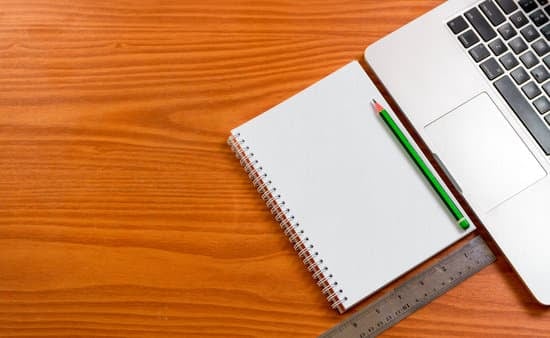Are you considering making major renovations to your home but feeling unsure about how to finance it? One option you might want to consider is taking out a second mortgage for home improvements. In this article, we will explore the concept of a second mortgage and how it can be used to fund the renovation of your home.
A second mortgage for home improvements allows homeowners to borrow against the equity in their homes in order to finance renovation projects. This can be an attractive option for those looking to make significant upgrades to their property but may not have the cash on hand to cover the costs upfront.
In the following sections, we will delve into the benefits of opting for a second mortgage for home improvements, how to qualify for this type of loan, as well as potential risks and pitfalls associated with it. Additionally, we will compare this financing option with others available in the market and provide steps on what to consider before committing to a second mortgage.
So, if you’re looking for ways to turn your dream home into a reality, read on to find out if a second mortgage could be the right solution for you.
Benefits of Getting a Second Mortgage for Home Improvements
When considering home improvements, many homeowners find themselves in need of additional funds to cover the costs. One option that is often overlooked is a second mortgage for home improvements. This type of loan allows homeowners to borrow against the equity in their home, making it an attractive option for those with substantial equity built up.
There are several benefits to getting a second mortgage for home improvements. First and foremost, it provides access to a significant amount of money that can be used to fund large-scale renovation projects or even build an addition to the home. Additionally, the interest rates on second mortgages tend to be lower than other types of loans, making it a more affordable option for financing home improvements.
Another advantage of taking out a second mortgage for home improvements is the potential tax benefits. In some cases, the interest paid on a second mortgage may be tax-deductible, providing additional savings for homeowners.
To qualify for a second mortgage for home improvements, homeowners must have sufficient equity in their property. Lenders typically require borrowers to have at least 20% equity in their home before they will consider approving a second mortgage. Additionally, borrowers will need to demonstrate their ability to repay the loan through income verification and credit history checks.
In summary, getting a second mortgage for home improvements can provide homeowners with access to substantial funds at relatively low-interest rates. With potential tax benefits and the ability to tap into their property’s equity, this financing option is worth considering for those looking to make significant upgrades to their homes.
How to Qualify for a Second Mortgage for Home Improvements
Qualifying for a second mortgage for home improvements is similar to getting any other type of loan, but there are some specific criteria that lenders will look at when considering your application. To qualify for a second mortgage, you typically need to have a good credit score, sufficient equity in your home, and a stable income.
Lenders will also want to see that you have the ability to repay the loan, so having a low debt-to-income ratio will work in your favor.
In addition, lenders may require a professional appraisal of your home to determine its current value and the amount of equity you have. They will also consider the loan-to-value ratio, which is the amount of the loan compared to the value of the property. Typically, lenders prefer this ratio to be no more than 85%, although some may allow higher ratios depending on other factors such as credit score and income.
It’s important to note that every lender has its own specific requirements for approving a second mortgage for home improvements, so it’s essential to shop around and compare offers from different financial institutions. Working with a mortgage broker can also be beneficial, as they can help you navigate the requirements and find the best options available to you.
| Qualification Criteria | Considerations |
|---|---|
| Good credit score | Above 620 is ideal |
| Sufficient equity in home | Lenders usually require at least 20% equity |
| Stable income | Evidence of steady employment or business income is necessary |
| Low debt-to-income ratio | Lenders prefer this ratio to be below 43% |
Comparing a Second Mortgage to Other Financing Options for Home Improvements
When considering a second mortgage for home improvements, it is important to weigh the options and compare this financing method to other alternatives. Here are some factors to consider when comparing a second mortgage to other financing options:
1. Interest Rates: One of the key considerations when comparing financing options for home improvements is the interest rate. A second mortgage typically has a lower interest rate compared to personal loans or credit cards, making it a more cost-effective option in the long run.
2. Loan Terms: Another factor to consider is the loan term. A second mortgage usually offers longer repayment periods compared to personal loans or lines of credit, allowing for more manageable monthly payments.
3. Equity Considerations: When comparing a second mortgage to other options, it’s important to consider how it will impact your equity in the home. Since a second mortgage uses your home as collateral, you will need to assess the potential impact on your equity and overall financial situation.
In addition to these factors, it’s essential to consider the potential risks and benefits of each financing option when making a decision for home improvements. While a second mortgage may offer lower interest rates and longer loan terms, it’s crucial to carefully evaluate how it aligns with your financial goals and overall situation before moving forward with this type of financing.
Ultimately, comparing a second mortgage to other financing options for home improvements requires thorough research and consideration of your individual financial circumstances and goals. By weighing the pros and cons of each option, you can make an informed decision that best suits your needs.
Potential Risks and Pitfalls of Getting a Second Mortgage for Home Improvements
When considering a second mortgage for home improvements, it is important to weigh the potential risks and pitfalls associated with this financing option. One of the main risks is the fact that a second mortgage uses your home as collateral. This means that if you are unable to make the payments on the second mortgage, you could potentially lose your home. It’s crucial to carefully consider whether you have a stable financial situation before taking on a second mortgage.
Another potential risk of getting a second mortgage for home improvements is the possibility of higher interest rates compared to your first mortgage. Since second mortgages are seen as riskier by lenders, they often come with higher interest rates. This means that over time, you could end up paying significantly more in interest compared to other financing options.
Additionally, there may be fees associated with taking out a second mortgage, such as closing costs and origination fees. These fees can add up and increase the overall cost of borrowing. It’s important to factor in these additional expenses when evaluating whether a second mortgage is the right choice for your home improvement project.
Considering these risks and potential pitfalls, it’s essential to carefully assess your financial situation and consult with a financial advisor before deciding on a second mortgage for home improvements.
| Risks/Pitfalls | Considerations |
|---|---|
| Potential loss of home if unable to make payments | Assessing stable financial situation |
| Higher interest rates compared to first mortgage | Comparing overall cost of borrowing |
| Additional fees such as closing costs and origination fees | Factoring in extra expenses |
Steps to Take When Considering a Second Mortgage for Home Improvements
When considering a second mortgage for home improvements, it’s important to take several crucial steps to ensure that you are making an informed decision. One of the first things to do is to assess your current financial situation and determine if you are able to handle the additional debt that comes with a second mortgage. This includes reviewing your income, expenses, and existing debts to see if you have enough financial stability to take on this type of loan.
Next, it’s essential to research and compare different lenders to find the best terms and rates for a second mortgage. You’ll want to gather information from various financial institutions and compare their offers carefully. Look at factors such as interest rates, repayment terms, fees, and closing costs in order to select the most advantageous option for your specific needs.
Before pursuing a second mortgage for home improvements, it’s also important to have a clear plan for how the funds will be used. Create a detailed budget outlining the costs of the renovations or upgrades you intend to make and ensure that you are borrowing an appropriate amount.
Additionally, consider consulting with a financial advisor or mortgage specialist who can provide personalized guidance based on your individual circumstances. By taking these steps, you can make an informed decision about whether a second mortgage is the right choice for financing your home improvement projects.
Real-Life Success Stories of People Using a Second Mortgage for Home Improvements
Successful Renovation Project With a Second Mortgage
One real-life success story of using a second mortgage for home improvements comes from the Smith family. They wanted to renovate their outdated kitchen and expand their living space but were hesitant about taking on additional debt. After carefully considering their options, they decided that a second mortgage was the best way to fund their renovation project.
With the extra funds, they were able to create their dream kitchen and add a much-needed extra bedroom to their home. The increase in the value of their property after the renovations far outweighed the cost of the second mortgage, making it a wise financial decision.
Turning Their Fixer-Upper Into a Dream Home
Another inspiring example is the Johnsons, who purchased a fixer-upper with plans to completely transform it into their dream home. After researching various financing options, they opted for a second mortgage to cover the costs of major renovations such as repairing structural damage, updating plumbing and electrical systems, and modernizing the interior.
With careful planning and budgeting, they were able to not only significantly increase the value of their property but also create a beautiful and comfortable living space for their family.
Investing in Energy-Efficient Upgrades
Finally, there is the case of the Ramirez family, who used a second mortgage to invest in energy-efficient upgrades for their home. By financing improvements such as installing solar panels, replacing old windows with energy-efficient ones, and upgrading insulation, they were able to reduce their utility bills significantly while also increasing the value of their property. The extra funds from the second mortgage allowed them to make these long-term investments that paid off both financially and environmentally.
These real-life success stories illustrate how a second mortgage for home improvements can be used strategically to achieve significant enhancements in both quality of life and property value. Each family carefully considered their needs and goals before deciding on this financing option, ultimately reaping the benefits in more ways than one.
Alternative Creative Financing Options for Home Improvements
When looking for ways to finance home improvements, there are several creative options to consider apart from a second mortgage. These alternative financing options can provide flexibility and may be more suitable depending on your financial situation and the scope of your home improvement project.
Credit Cards and Personal Loans
For smaller home improvement projects, using credit cards or obtaining a personal loan could be a viable alternative to a second mortgage. Many credit card companies offer promotional interest rates for new accounts, which could help you finance your project with little to no interest for an introductory period. Personal loans also offer a fixed interest rate and structured repayment terms, making it easier to budget for your home improvements.
Home Equity Line of Credit (HELOC)
A HELOC is another way to tap into the equity of your home without taking out a second mortgage. This option allows homeowners to borrow against their home’s value up to a certain limit and only pay interest on the amount they use. A HELOC offers greater flexibility in accessing funds as needed for ongoing home improvement projects, making it an attractive alternative to a second mortgage.
Government Grants and Programs
Depending on the nature of your home improvements, there may be government grants or programs available to help offset the costs. These grants are typically allocated for specific types of renovations such as energy efficiency upgrades or accessibility modifications. Researching available programs in your area could lead to significant savings on your home improvement expenses.
Considering these alternative financing options alongside a second mortgage for home improvements can help you make an informed decision based on your individual financial circumstances and the specific needs of your project. Always consult with financial advisors or lending institutions to explore the best options for funding your home improvements effectively.
Conclusion
In conclusion, a second mortgage can be a valuable tool for homeowners looking to make significant improvements to their property. The ability to borrow against the equity in your home can provide access to larger sums of money at a lower interest rate compared to other financing options. This, in turn, allows for more substantial renovations or upgrades that can ultimately increase the value of your home.
While there are benefits to getting a second mortgage for home improvements, it’s important to carefully consider the potential risks and pitfalls. Taking on additional debt secured by your home can put you at risk of foreclosure if you’re unable to make the payments. It’s essential to assess your financial situation and ensure that you have a solid plan for repayment before pursuing this financing option.
For those considering a second mortgage for home improvements, it’s crucial to thoroughly research and compare different lenders’ terms and rates. Additionally, exploring alternative creative financing options may provide more flexibility and less risk for some homeowners. In any case, consulting with a financial advisor or mortgage professional is highly recommended before making any decisions regarding using a second mortgage for home improvements.
Ultimately, whether or not a second mortgage is the right choice for funding home renovations will depend on an individual’s specific circumstances. Careful consideration of the benefits and potential drawbacks outlined in this article is essential in making an informed decision about how best to finance your home improvement projects.

I’m thrilled to have you here as a part of the Remodeling Top community. This is where my journey as an architect and remodeling enthusiast intersects with your passion for transforming houses into dream homes.





